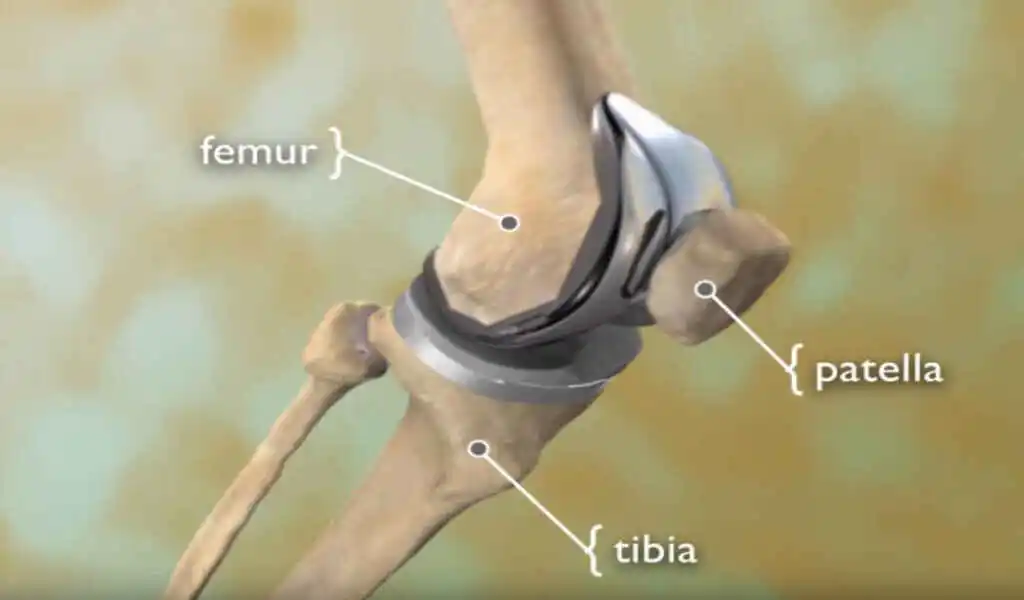What is knee joint replacement?
Knee joint replacement, also called knee arthroplasty or knee resurfacing, is a surgical procedure to replace the weight-bearing surfaces of the knee joint to relieve pain and disability. It is usually performed when conservative treatments, such as medication, physical therapy, and weight loss, have failed to provide relief.
The most common reason for knee joint replacement is osteoarthritis. Osteoarthritis is a degenerative disease that breaks down the cartilage that cushions the ends of bones. When the cartilage wears away, the bones rub against each other, causing pain and disability. Knee joint replacement can also be performed to treat other conditions, such as rheumatoid arthritis and post-traumatic arthritis.
Knee replacement is a kind of arthroplasty. Arthroplasty means “the surgical repair of a joint,” and it involves the surgical remodeling and replacement of degenerated joints, using artificial body parts, or prosthetics.
When the articular cartilage of the knee becomes damaged or worn, it becomes painful and the knee is very difficult to move. Rather than sliding over each other, the bones rub and crush together. With prosthesis, the patient will feel comfortable, and the knee will move properly.
How does knee joint replacement work?
During knee joint replacement surgery, the damaged surfaces of the knee joint are removed and replaced with artificial parts (called implants). The implants may be made of metal alloys, ceramic materials, or plastic polymers. Knee joint replacement surgery is usually performed under general anesthesia. The surgeon makes an incision around the knee joint and removes the damaged bone and cartilage surfaces. The newly implanted knee implant is then put into place and secured with cement or screws. The slit is closed with stitches or staples.
After surgery, you will need to stay in the hospital for several days so that your pain can be controlled and your leg can be immobilized to allow healing. You will then begin a course of rehabilitation that will help you regain strength and range of motion in your
Why have knee replacement surgery?
There are usually three reasons for the procedure:
Osteoarthritis: this type of arthritis is age related, caused by the normal depletion of the knee joint. It mostly affects patients aged 50 or older, but younger people also have it. Osteoarthritis is caused by inflammation, breakdown, and the steady and consequent loss of cartilage in the joints. Progressively, the cartilage wears down and the bones rub together. To balance, the bones often grow thicker, but this results in more abrasion and pain.
Rheumatoid arthritis: also called inflammatory arthritis, the layer around the knee joint becomes rigid and inflamed. Chronic inflammation bruises the cartilage, causing soreness and stiffness. In this instance, the immune system attacks its own tissues, including joints. It is an autoimmune disease.
Post-traumatic arthritis: this type of arthritis is caused by an extreme knee injury. When the bones around the knee break or the ligaments tear, it affects the knee cartilage. It develops quickly after an injury instead of years of wear and tear like other arthritis.
Who might need a knee replacement?
Knee surgery may be applicable to patients who experience:
- Severe knee pain or rigidity that prevents them from carrying out everyday tasks and jobs. This includes walking, getting upstairs, getting in and out of cars, getting up from a chair
- Moderate but constant knee pain that continues while sleeping or resting
- Chronic knee inflammation and swelling that persists even after taking medications or resting
- Knee impairment, where there is an observable arch on the inside or outside of the knee
- Depression evolved from an inability to carry out day-to-day or social activities
Types of knee replacement surgery
Knee replacement can be total or partial. If a knee is damaged by arthritis, taking out part of the joint may bring comfort.
- Total knee replacement (TKR): Surgery involves the removal of both sides of the knee joint. It is the most common procedure. Surgery usually lasts between 1 and 3 hours. The individual will have less discomfort and better mobility, but there will be scar tissue, which can make it difficult to move and bend the knees. Most patients are able to return to casual activities and walk without the need for assistive devices between 3 and 6 weeks after surgery.
- Partial knee replacement (PKR): A partial knee replacement replaces only one side of the knee joint: the inside side, the outside side, or the kneecap side. Less bone is trimmed away, so the cut is smaller, but it does not last as long as a total replacement. People who have a partial knee replacement recover faster than those who have a total knee replacement
Risks involved in knee joint replacement
Most patients who choose to have knee replacement surgery are very happy and satisfied with their decision. However, there are possible complications associated with surgery. Here are some problems that might be faced by patients who have knee joint replacement.
I. Knee stiffness
Ii. Clicking or clunking noises from artificial joints
Iii. Wearing out of implants
Iv. Infection
V. Blood clot
CONCLUSION
Knee replacement surgery can have a profound impact on someone’s life, allowing them to experience pain relief and regain mobility. When other treatments have failed, it is usually recommended to use this method of treatment, and it can last for many years. Knee replacement surgery can help soothe pain and restore function in severely diseased knee joints. A person with mobility issues who has difficulties climbing stairs, walking, and getting in and out of a chair may benefit from this procedure.
SEE ALSO:
COVID-era Free Food Program Replaced With A Cheaper One In India
Paris Gunman Kills 3 At A Kurdish Cultural Centre
⚠ Article Disclaimer
The above article is sponsored content any opinions expressed in this article are those of the author and not necessarily reflect the views of CTN News






